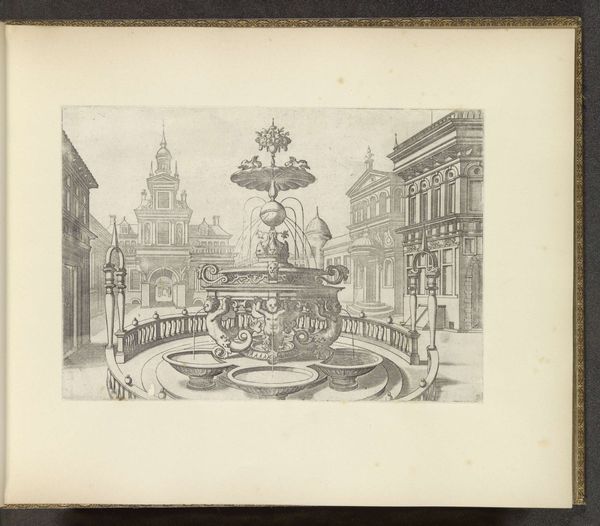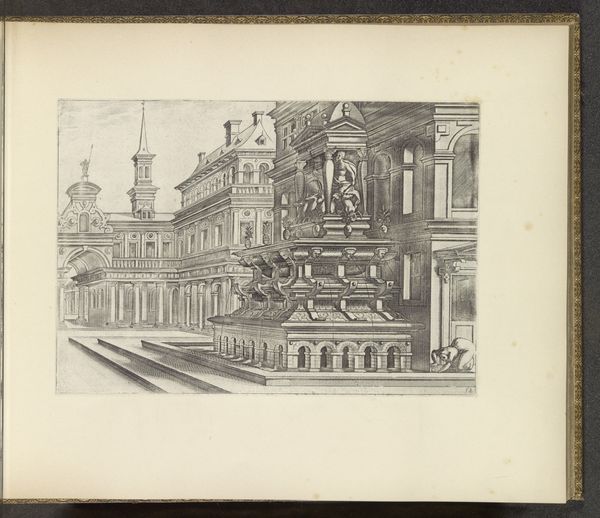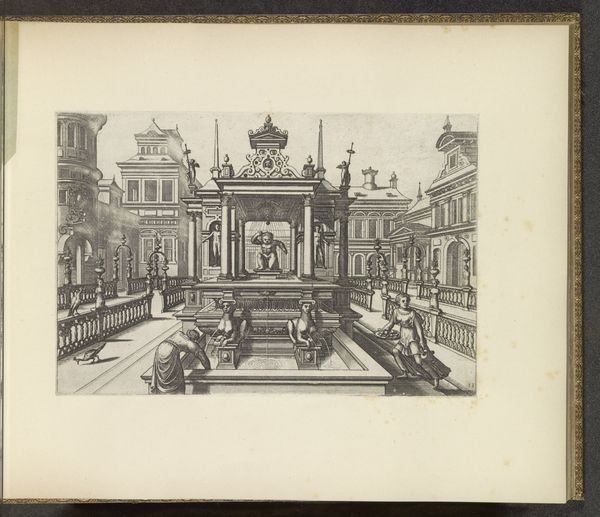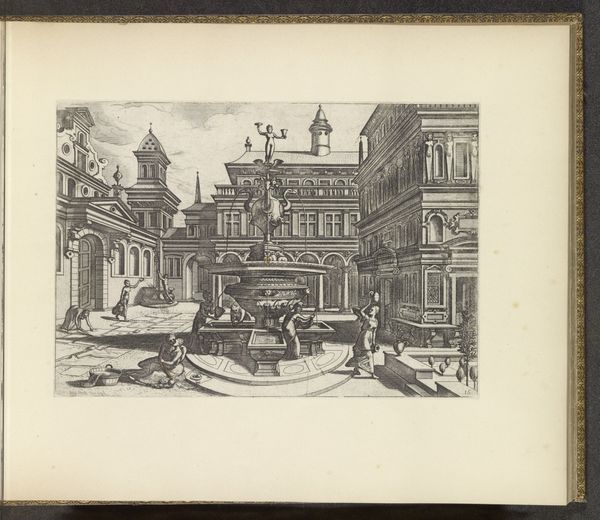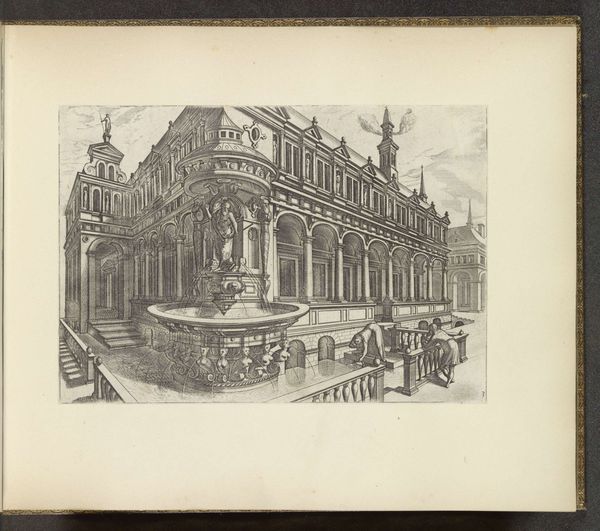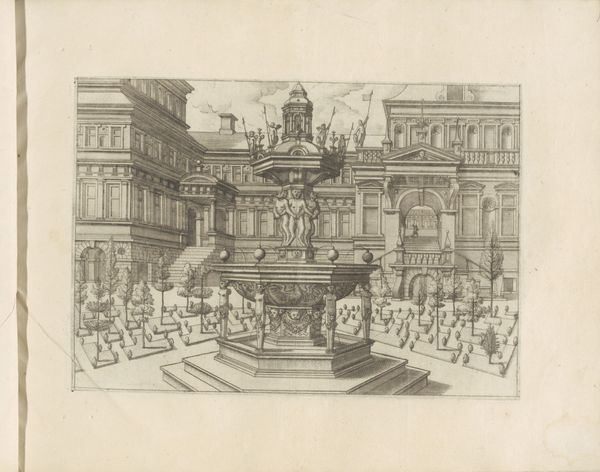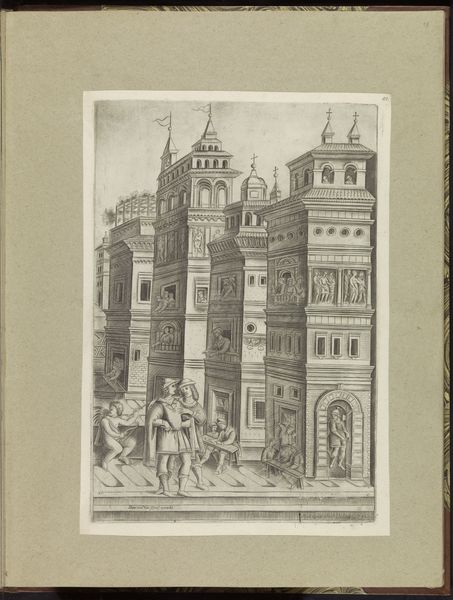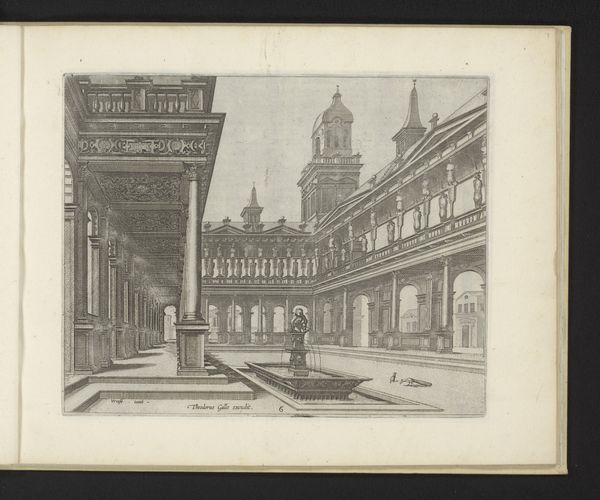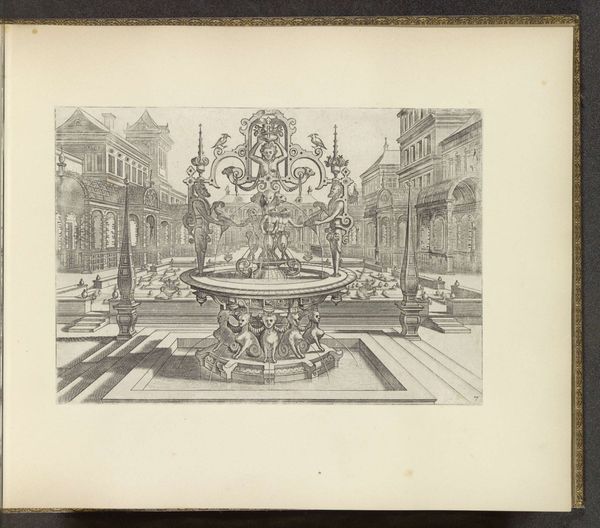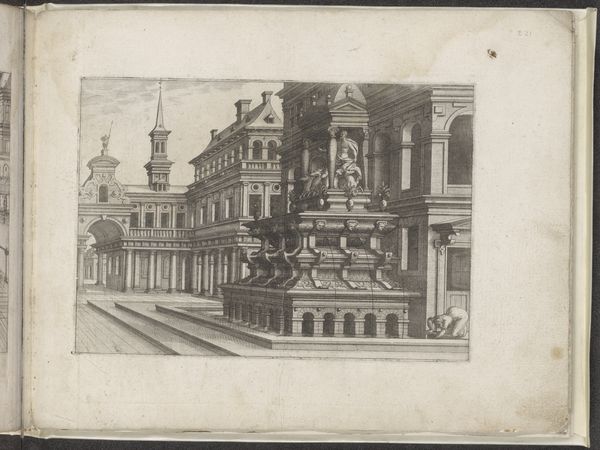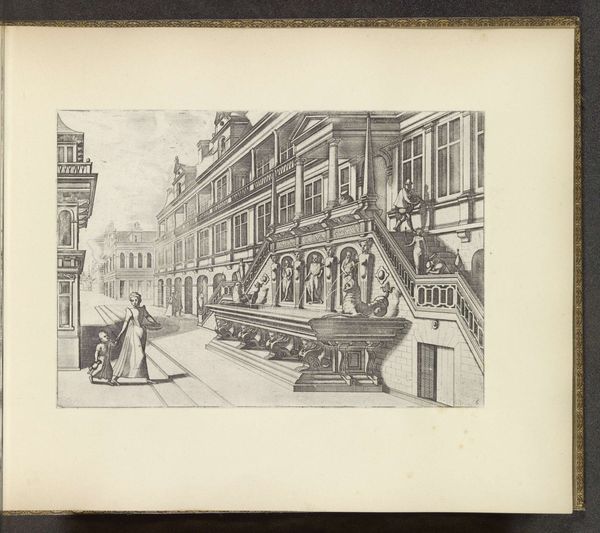
Tuin van een paleis met fontein op een hexagonale basis c. 1600
0:00
0:00
drawing, ink
#
drawing
#
mechanical pen drawing
#
pen sketch
#
sketch book
#
perspective
#
11_renaissance
#
personal sketchbook
#
ink
#
ink drawing experimentation
#
pen-ink sketch
#
pen work
#
sketchbook drawing
#
cityscape
#
history-painting
#
storyboard and sketchbook work
#
sketchbook art
Dimensions: height 173 mm, width 249 mm
Copyright: Rijks Museum: Open Domain
Curator: Editor: Here we have "Tuin van een paleis met fontein op een hexagonale basis," a pen and ink drawing from around 1600 by Johannes or Lucas van Doetechum, housed at the Rijksmuseum. It feels very formal and rigidly planned. What do you see in it? Curator: I see a visual manifestation of power. Consider the context of 16th-century Europe, the rigid formalism mirrors a hierarchical society. This garden, likely accessible only to the elite, speaks to the control they exert over nature, and by extension, the populace. Do you notice the stark contrast between the geometric garden and the natural world beyond? Editor: Yes, that’s really striking! It’s like they're imposing order onto something inherently wild. So, the garden becomes a symbol? Curator: Precisely. It’s a symbol of dominance, of the power to dictate and control. Consider who *didn't* have access to such spaces – the working class, women, people of color. These gardens became stages for social performance, reinforcing existing inequalities. Who is this space designed to serve and impress, and who is excluded? What impact does the exclusion from aesthetically pleasing and carefully maintained spaces have? Editor: It makes me think about who gets to define beauty and who benefits from those definitions. This drawing shows how art can reflect and perpetuate power structures. Curator: Exactly. And understanding this allows us to critically examine similar structures in contemporary society, to challenge those exclusionary practices, and question those ideas of "beauty" that leave others excluded. Editor: That's given me a lot to think about, seeing how the historical context really shapes how we understand this piece. Thank you.
Comments
No comments
Be the first to comment and join the conversation on the ultimate creative platform.
